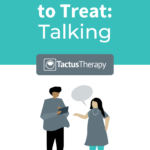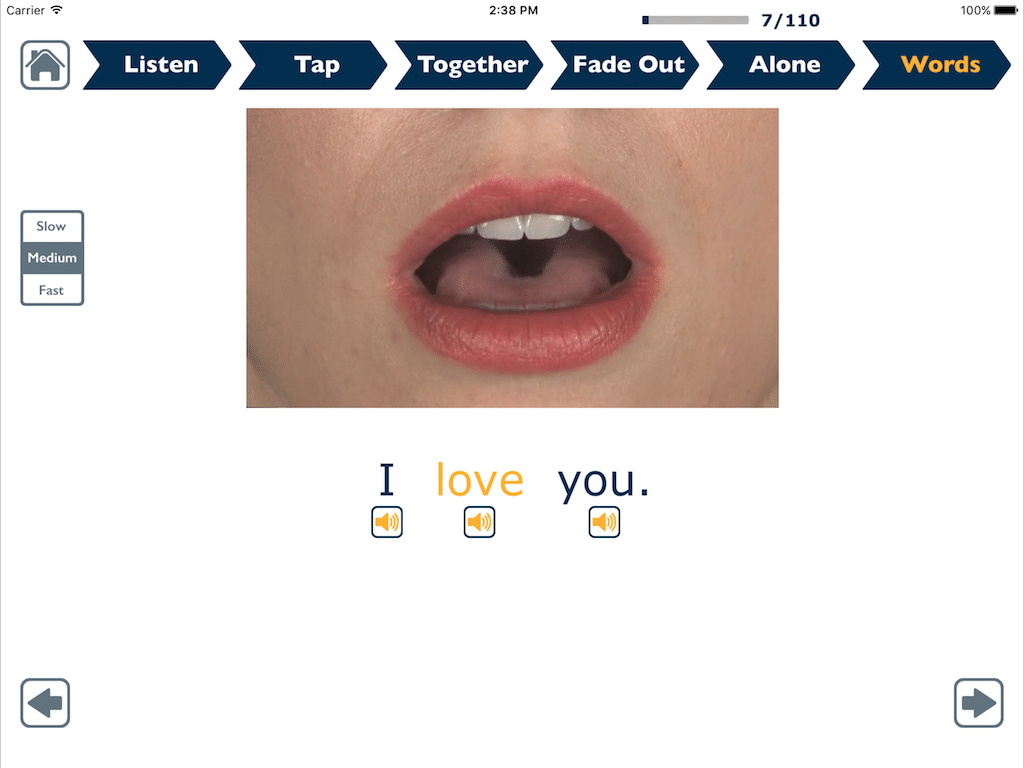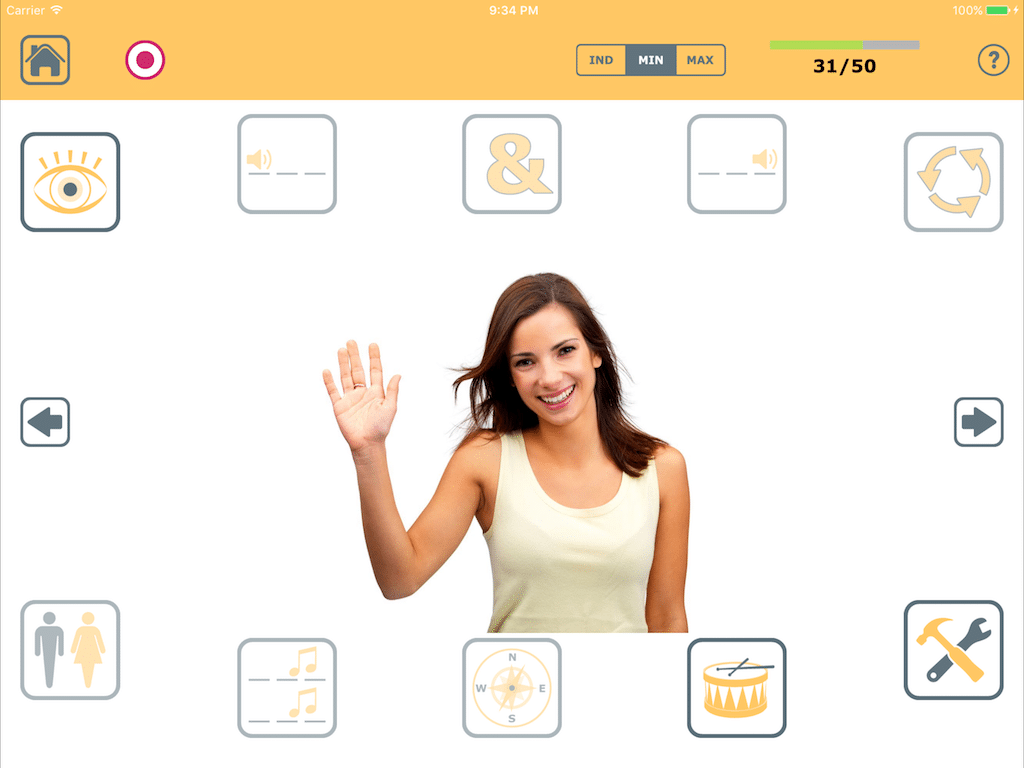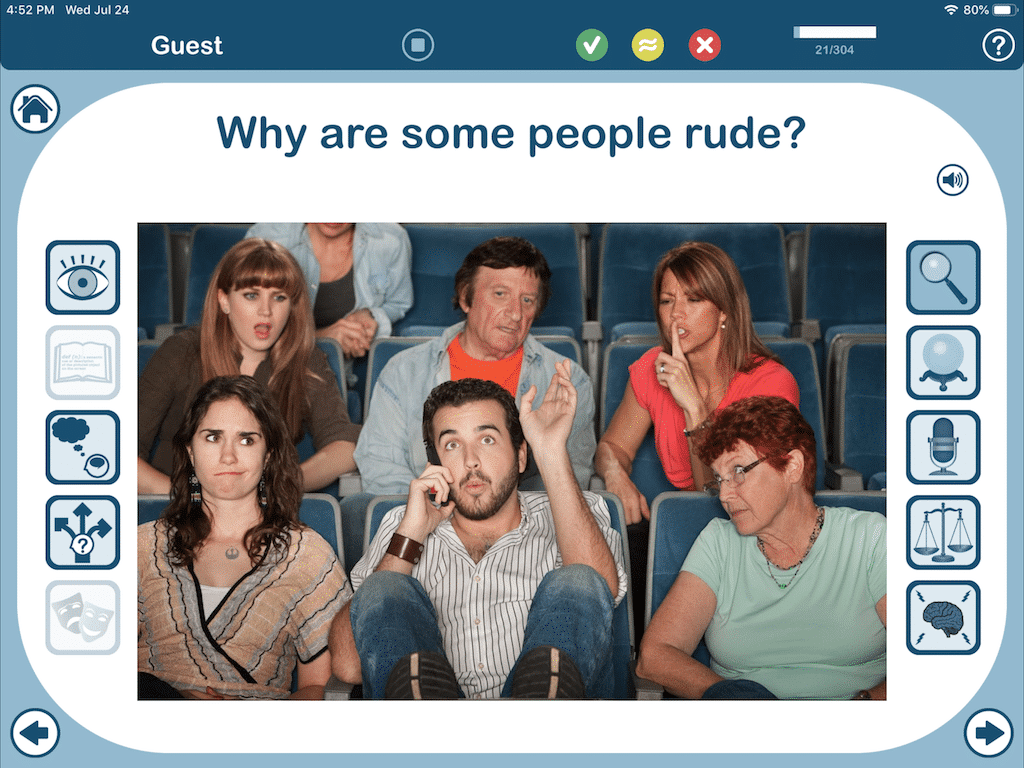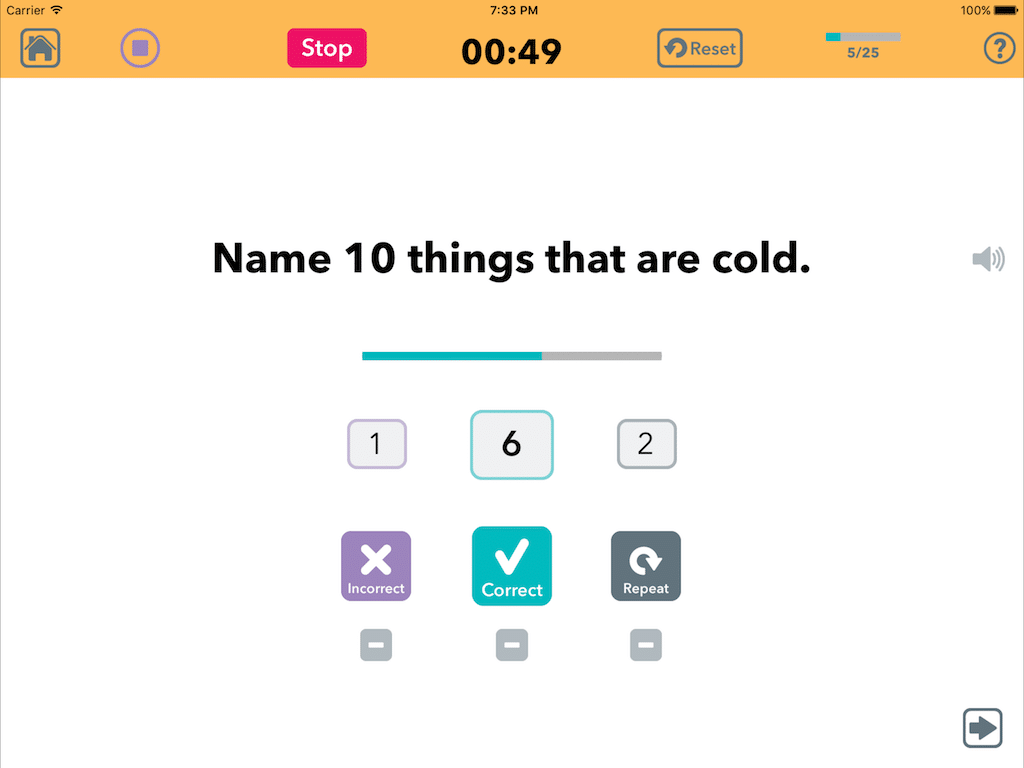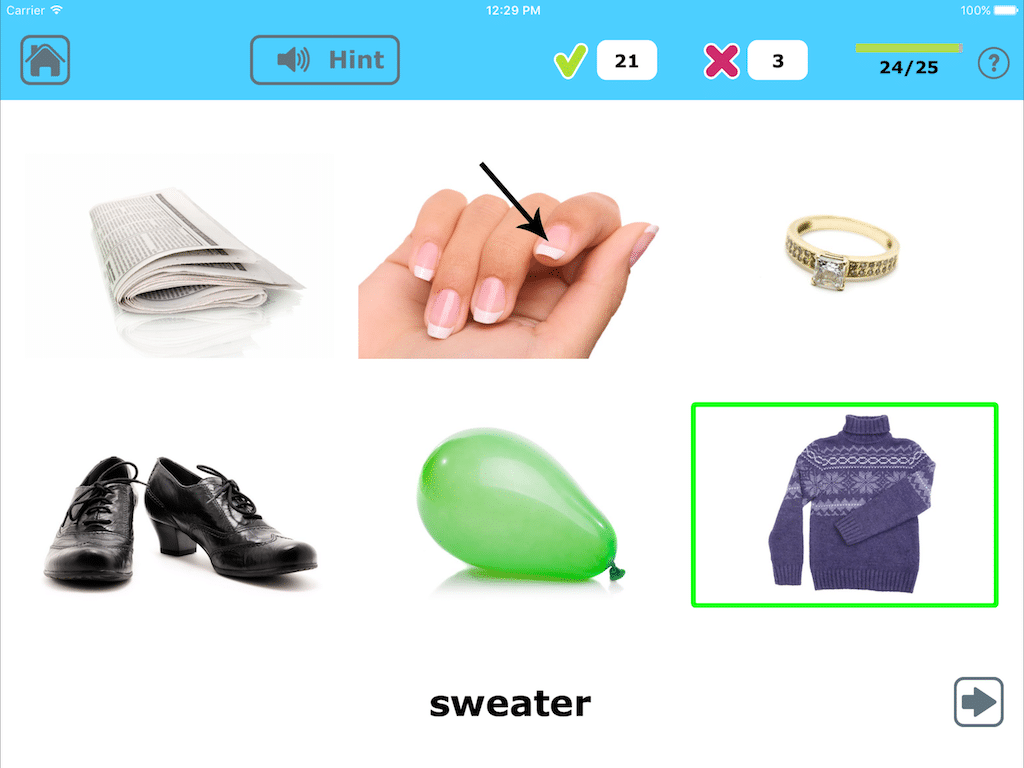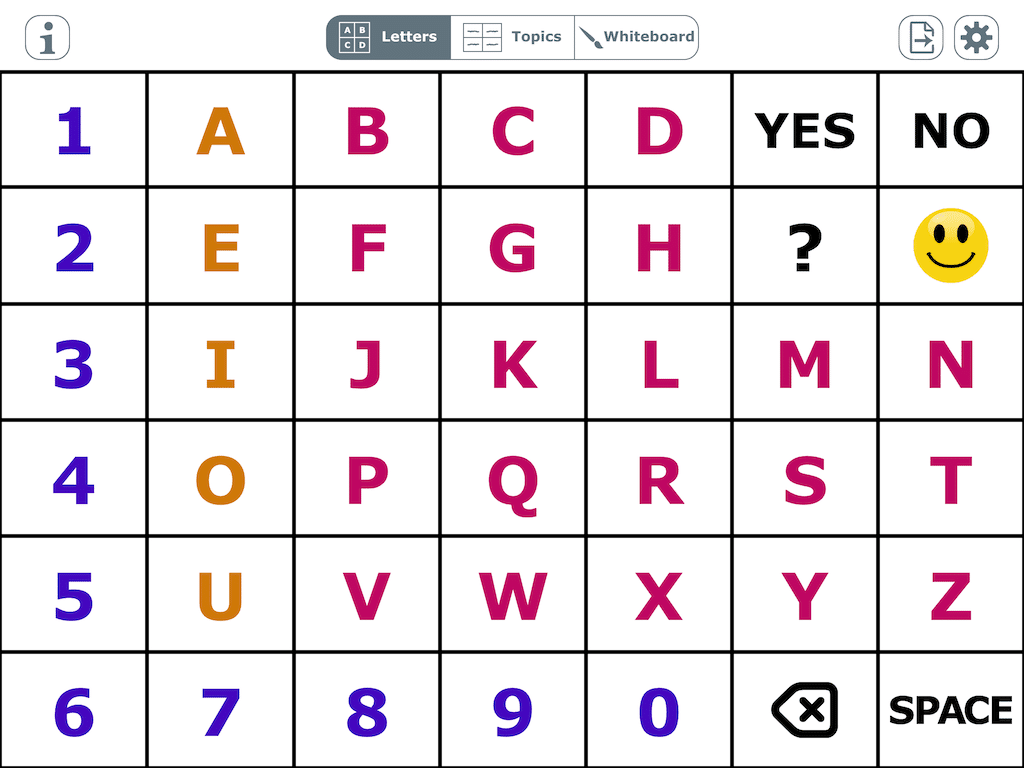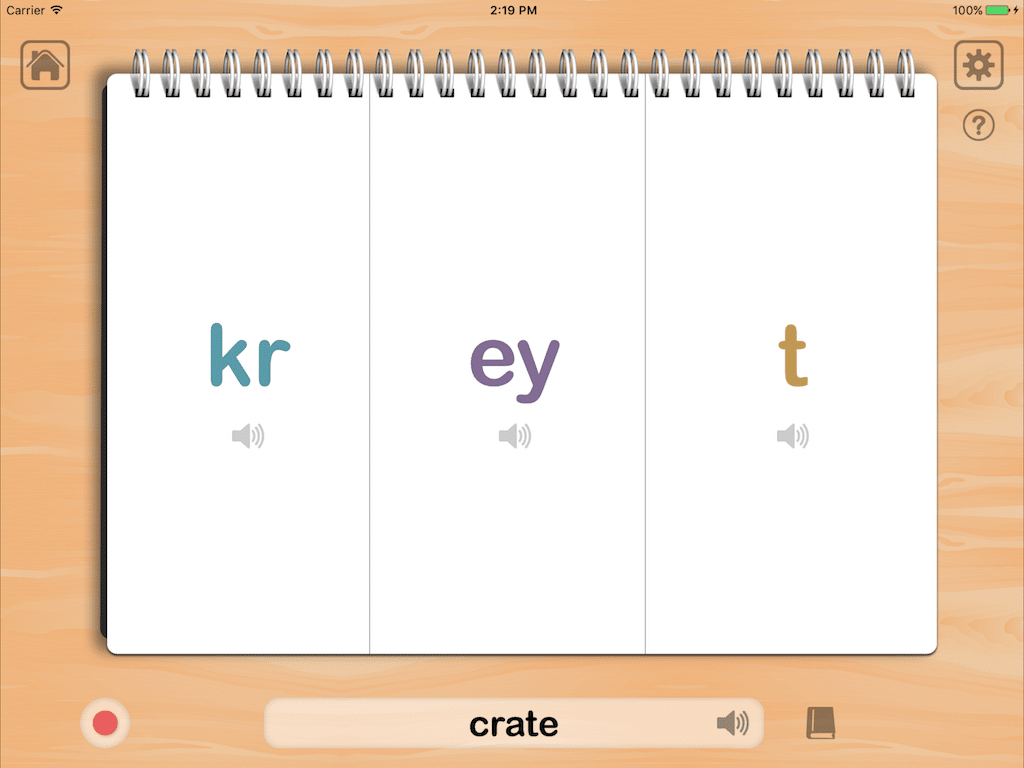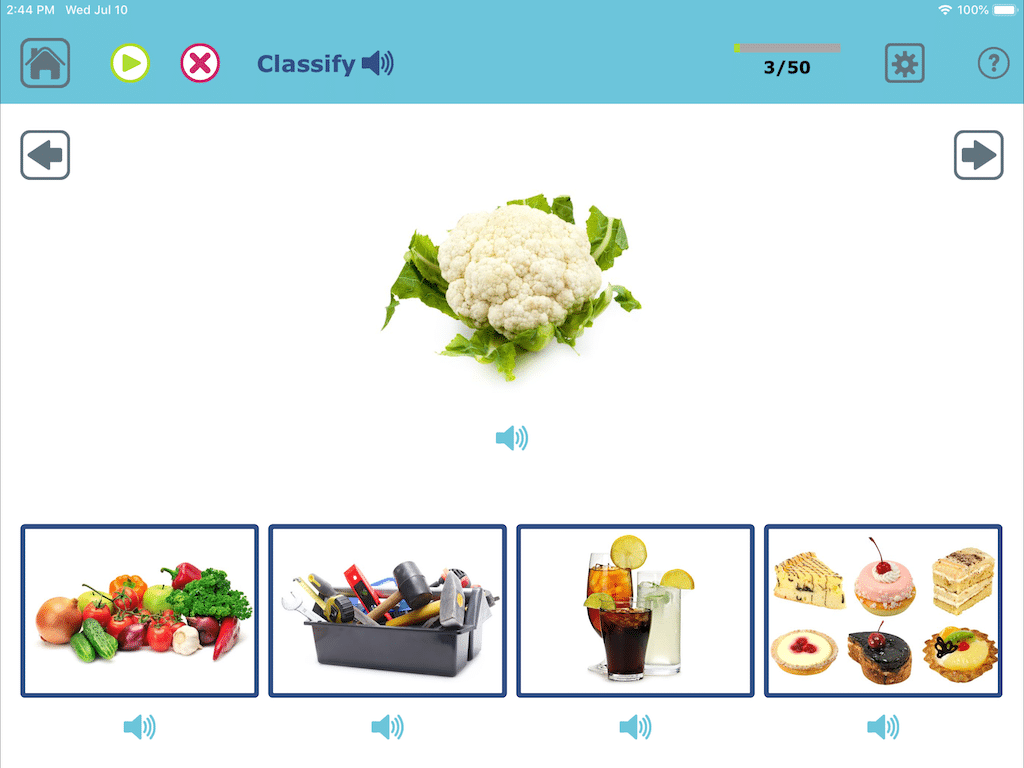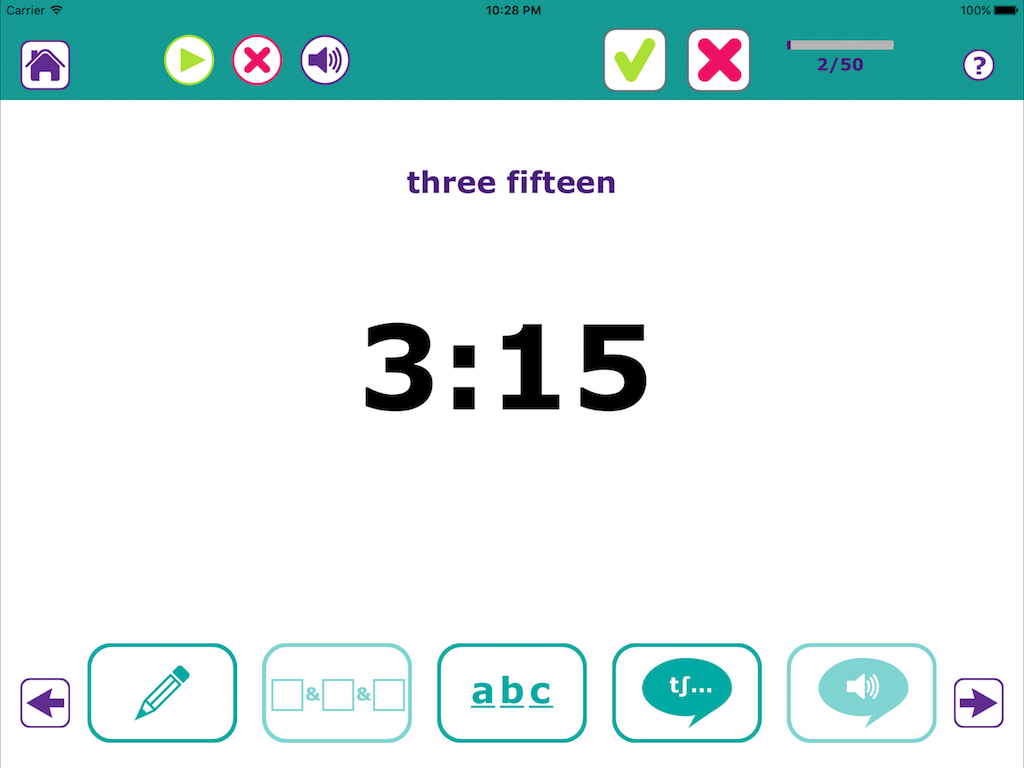Using Speech Therapy Apps to Treat Talking: Verbal Expression in Adults with Aphasia
7 min read
What could be more frustrating that not being able to talk? Knowing what you want to say, but not being able to get it out – this is what millions of stroke survivors with aphasia experience every day. Speech therapy can help, and apps can be an important part of speech recovery.
There are a lot of apps that just give you multiple choices questions and don’t ever require you to actually talk. The best practice for talking is talking, so while our apps don’t always score you right or wrong, they do get you talking – and that’s what makes them so effective!
So for those of you trying to help yourself, a client, or a loved one to regain their speech, here’s the progression we recommend when using our apps.
Download this guide on using apps to treat talking.
This free PDF handout contains extra information about which activities to do in each of the recommended apps. Perfect to print & give to families or use to help your loved one with aphasia.
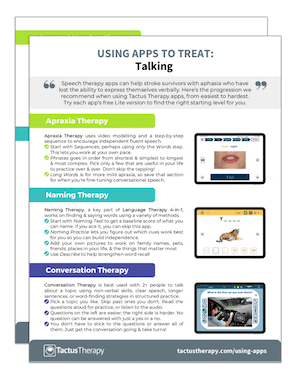
In addition to receiving your free download, you will also be added to our mailing list. You can unsubscribe at any time. Please make sure you read our Privacy Policy and Terms & Conditions.
1) Apraxia Therapy
An injured brain may struggle to think of the words to express an idea, but fortunately, we are social creatures who innately copy what we see. Apraxia Therapy takes advantage of our mirror neurons that kick in when we see another person’s mouth moving as we try to speak in unison. It uses repetition, rhythm, and motor activation along with a fading cueing hierarchy to promote independent speech – even for those with severe aphasia and apraxia.
The Sequences activity draws on our automatic speech – counting, days of the week, and nursery rhymes. These can be practiced all together, or just as individual words at your own pace. Phrases takes everyday, functional sentences and lets you practice over and over.
(For those who have a milder apraxia, it’s common to struggle on longer words in conversation. This is when you’ll use the Long Words activity to practice different stress patterns and connecting the syllables together more smoothly for 2-5 syllable words.)
2) Naming Therapy
Now the pressure to think of the word begins as we see a picture and ask, “what is this?” But unlike regular flashcards or quiz games, this app has a built-in cueing hierarchy to help the person with aphasia get to the word on their own using the hints they want to use, when they want to use them.
Use Naming Practice to work on finding and saying words, and then move up to Describe to delve deeper into what a thing does, looks like, and feels like, as well as thinking more about what the word sounds like. Naming Therapy can be used for several evidence-based treatment techniques. Read our How To series of articles to learn more about using RET, SFA, PCA, cueing hierarchies, word-finding strategies, and more with this app. Naming Therapy is available alone or as part of Language Therapy 4-in-1.
3) Conversation Therapy
We talk for two reasons: transaction and interaction. While we need language to request, command, and respond (transaction), we enjoy using language to converse, share stories, tell jokes, express feelings, and connect (interaction). Conversation Therapy is an app that gets people talking on the interaction level.
Through a structured series of 10 questions that cannot be answered with a simple yes or no, Conversation Therapy prompts two or more people to start a conversation about a topic of interest. There are no right or wrong answers, but there are many chances to use strategies, gestures, writing, talking, and expanded vocabulary to share memories and opinions along with making inferences and predictions. The goal is to keep the conversation going beyond the questions, and keep the focus of therapy on expressing oneself through any means possible.
4) Advanced Naming Therapy
For those ready to stretch their verbal skills, Advanced Naming Therapy offers four unique and challenging activities. The Create activity is based on a well-researched therapy technique called VNeST, focusing on a verb and creating 3 sentences around it. The app offers multiple-choice supports and the ability to use the voice dictation feature on the keyboard to speak instead of type if needed.
For a fun challenge, use the Generate activity to think of words that are related by category or sound. Time yourself or set a target to practice what are known as verbal fluency skills. Those who are more analytical or academic-minded may enjoy comparing and contrasting pictures or concepts in the Compare activity. It’s harder than it sounds, and it requires a good understanding and vocabulary to do it well. For lots of laughs, dive into the funny and interesting pictures in the Describe activity. Laughter is good medicine!
Want more apps for talking?
Most of our apps can be used for more than one skill. While these apps aren’t designed with talking as the primary goal, they can be used by people looking to improve their talking.
Bonus App 1) Comprehension Therapy
“Wait, what? I thought this was a list of apps for talking, not understanding!” It is! But often people with severe aphasia are helped most by stimulating their listening and cognitive skills first. So many people with aphasia spontaneously start to repeat the words they hear in the Listen activity while searching for the correct picture. They read the word aloud in the Read activity without even thinking. Encouraging these verbalizations, but not requiring them, is a low-pressure way to start talking again.
Stimulating all 4 language modalities can reap benefits for each system, which is why we package Comprehension Therapy in our best-selling Language Therapy 4-in-1 app. You may think you don’t need to work on understanding when talking is the main problem, but you might be missing a big opportunity to improve through alternate approaches. The brain is a network, and we want to maximize the stimulation of language through all possible pathways.
Bonus App 2) AlphaTopics
For those who have trouble speaking, an augmentative app can help. AlphaTopics AAC helps people communicate in 3 unique ways. 1) Point to the letters to start to spell a word, 2) establish the topic before asking yes/no questions, 3) draw or write with your finger.
This affordable tool should be on every person’s tablet or phone who needs to communicate with anyone who struggles to speak so they can quickly write out choices, verify the topic, or provide spelling support in communication breakdowns.
Bonus App 3) Speech FlipBook
Working on saying words containing specific sounds is good therapy for people with apraxia. Often the speech therapist will pick out words that have only a single consonant and a vowel (“ma”), or they’ll challenge their clients with with more complicated groups of sounds (“strength”). Speech FlipBook is an app that lets you pick which sounds you want in each position of the word. You can listen to and repeat each sound or the whole word. Record yourself and compare to the app
Bonus App 4) Category Therapy
Category Therapy is another app that does not require you to say a word, but you certainly can use it to do a lot of talking! Set the app to use Pictures Only to practice naming each item on the screen. Try the Add One activity, and instead of simply selecting the object that goes with the others, create a sentence. For example, “pizza goes with sausage, sandwich, and salad because they are all foods.”
This app exercises the semantic system – the part of language that focuses on the meaning of words and the connections between words. Don’t underestimate what good practice this can be for word finding skills and talking! Strengthening these connections can lead to faster word retrieval and deeper understanding of words.
Bonus App 5) Number Therapy
The Speak activity in Number Therapy focuses on saying the names of numbers. Numbers can be especially challenging for people with aphasia, and they’re everywhere! Focus on time, money, dates, fractions, big numbers, or small numbers – the choice is yours. Number Therapy offers a cueing hierarchy to help with saying the names of these important symbols in our lives.
Found this article useful? Download the guide now.
This handout contains extra information about which activities to do in each of the recommended apps.

In addition to receiving your free download, you will also be added to our mailing list. You can unsubscribe at any time. Please make sure you read our Privacy Policy and Terms & Conditions.
